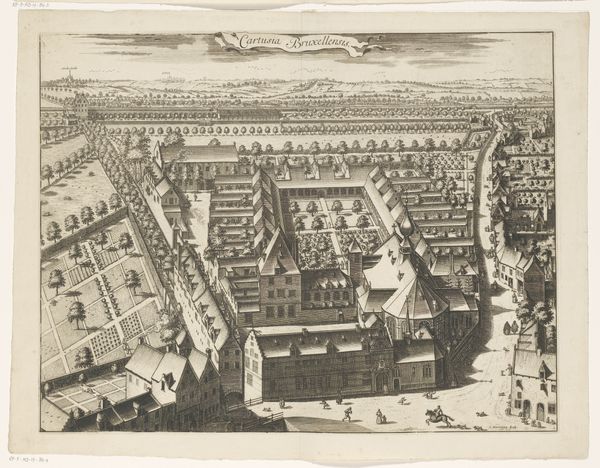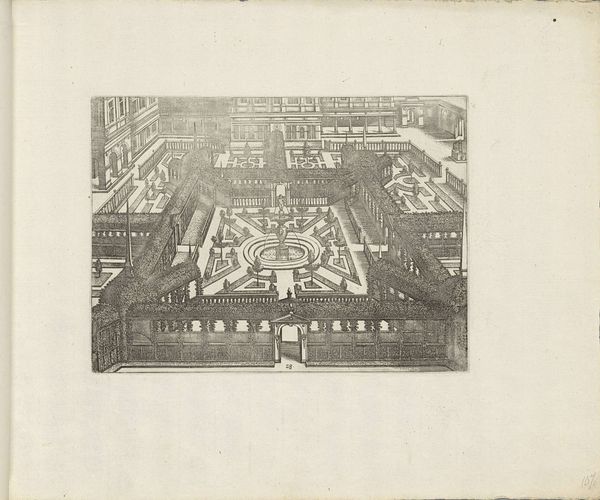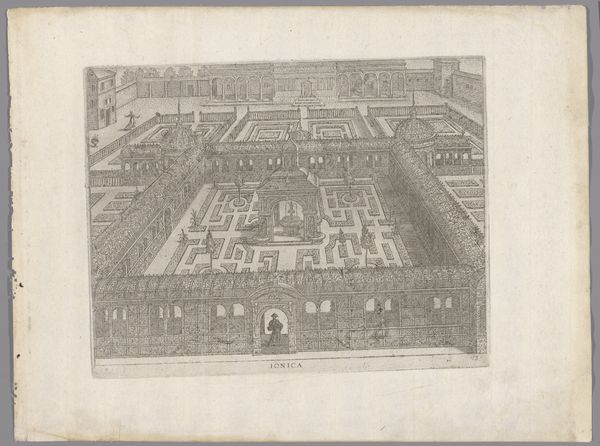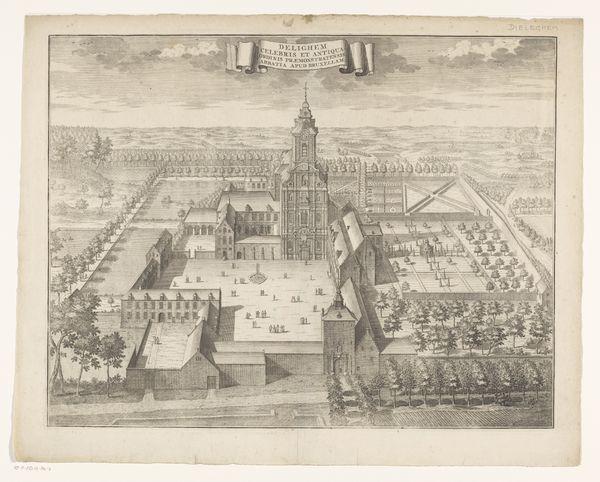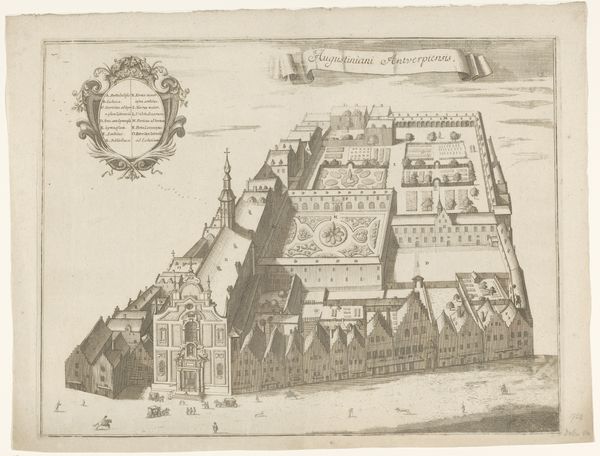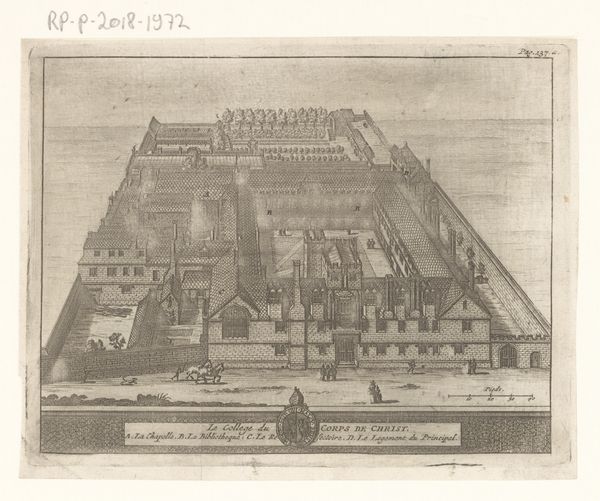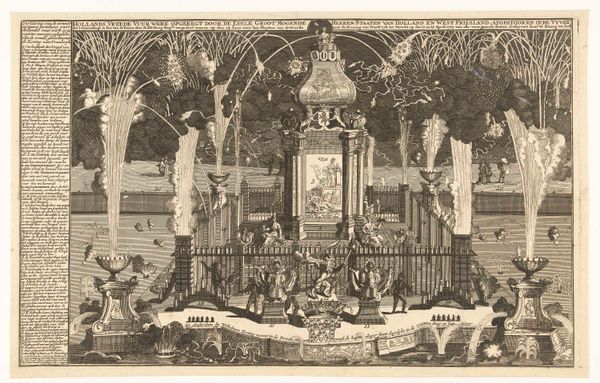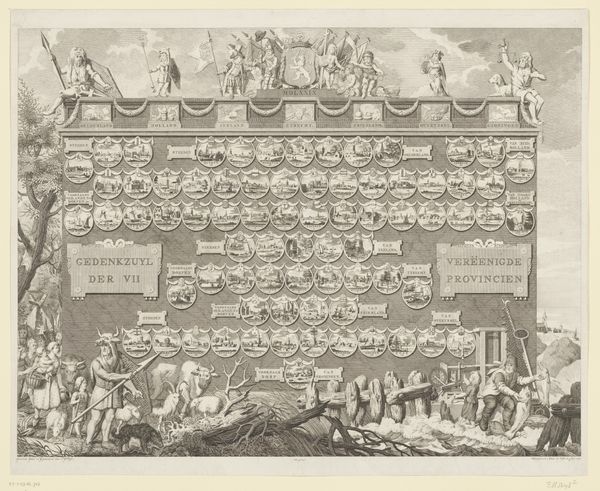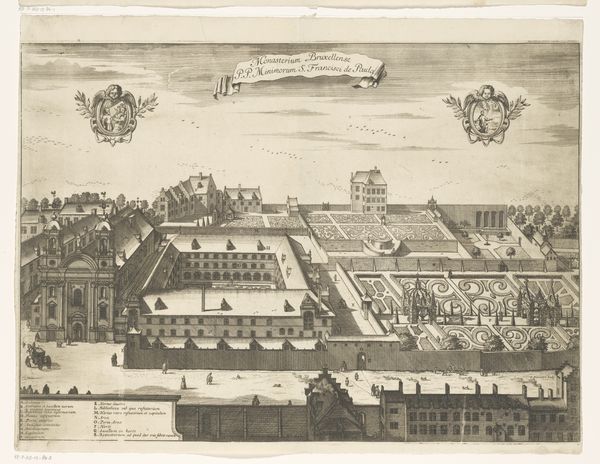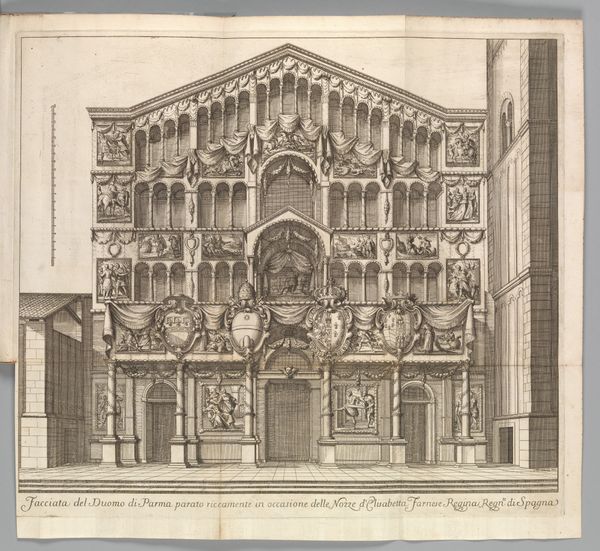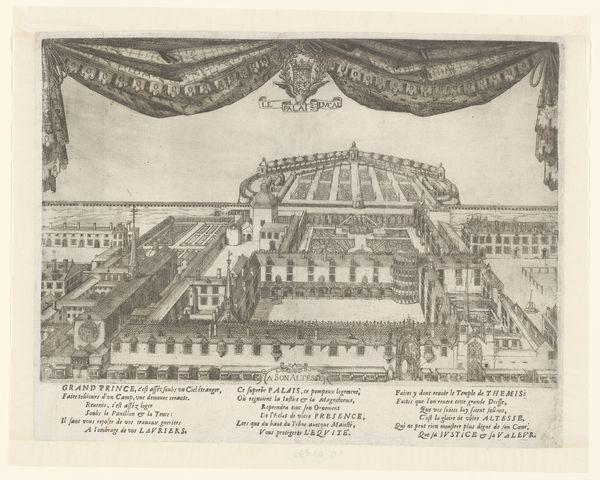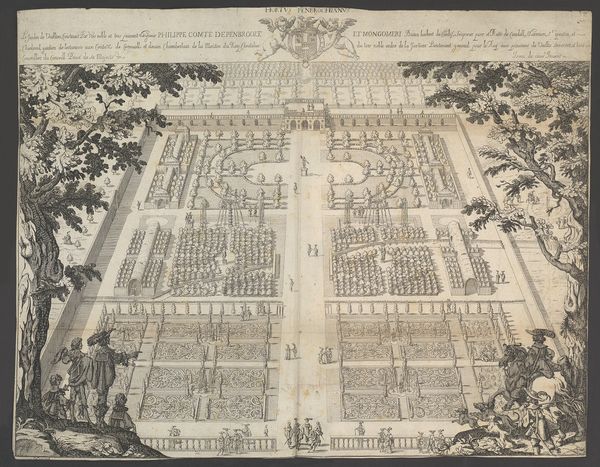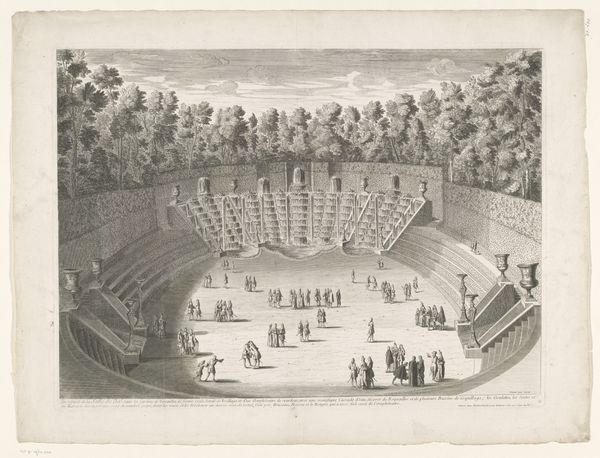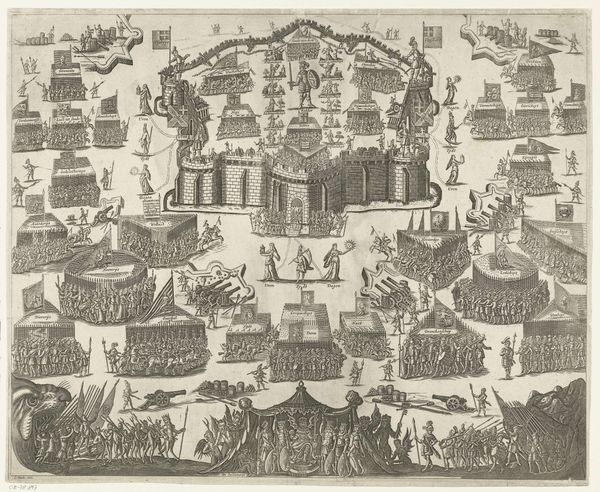
print, engraving, architecture
#
baroque
# print
#
old engraving style
#
cityscape
#
engraving
#
architecture
Dimensions: height 345 mm, width 450 mm
Copyright: Rijks Museum: Open Domain
Curator: Looking at this work, I immediately think about the intersection of power and representation in 18th-century Antwerp. Editor: The overwhelming sense of detail is amazing. So intricate, almost obsessive in its recording of every window and tree. Curator: This is "Gezicht op het Minderbroerdersklooster te Antwerpen," dating from 1727 to 1734, created by Reynier Blokhuysen. It offers a birds-eye perspective on the Franciscan Monastery. We need to remember prints like these served various social functions: documenting urban development, expressing civic pride, even reinforcing institutional authority. Editor: As an engraving, the choice of line is fascinating, creating textures that evoke stone, foliage. Imagine the labor involved in translating such a massive structure and space into these precise marks. I wonder what kind of tools were used, how the light would have impacted the visibility of the plate. Curator: And what was the relationship with the Franciscans during its creation? To what extent did their patronage shape the perspective that’s offered to the public? Notice how the building and gardens appear to unfold seamlessly, promoting a sense of order. Editor: The manicured gardens within the cloister seem to speak to the resources and control wielded by the monastic order, right? A stark contrast, certainly, to the lives of laborers in the broader city, all carefully etched into existence. There's also a curious tension between this depiction of control and the chaos inherent in craft. Curator: Exactly! It's a visual statement on social order but mediated through Blokhuysen’s interpretations. The visual rhetoric here highlights both a literal construction and the social construction of Antwerp. Editor: Considering what an artifact like this conveys, the texture becomes important as it provides access to a moment in the past. Curator: I’ll leave now contemplating the power of images to shape how institutions were understood. Editor: And for me, it’s considering how an artisan like Blokhuysen, using basic materials and sheer labor, gave tangible form to that understanding.
Comments
No comments
Be the first to comment and join the conversation on the ultimate creative platform.
